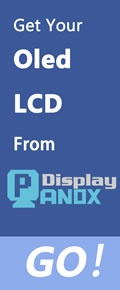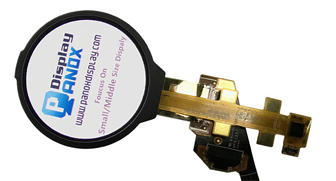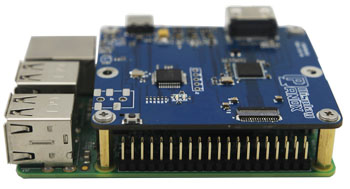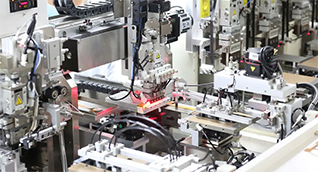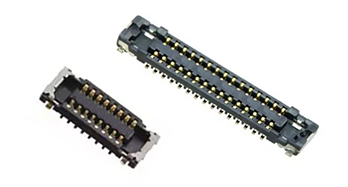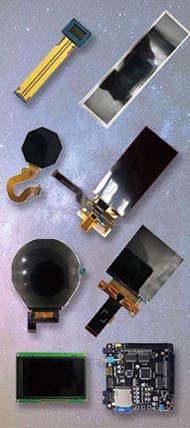AMOLED and OLED are two cutting-edge display technologies with distinct features and advantages. Both produce superior image quality, but AMOLED offers faster refresh rates and better power efficiency, making it ideal for advanced applications. Choosing the right display depends on usage, cost, and custom manufacturing needs. Also check: OLED
What Is OLED and How Does It Work?
OLED (Organic Light Emitting Diode) is a flat light-emitting technology that uses organic compounds to produce light when an electric current passes through. OLED displays offer deep blacks, high contrast, and vibrant colors because each pixel emits its own light independently, eliminating the need for a backlight.
As a China-based manufacturer and supplier, Panox Display specializes in OEM OLED screens, providing both monochrome and full-color custom solutions to meet diverse industrial and consumer product needs.
How Does AMOLED Differ from OLED Technology?
AMOLED (Active Matrix OLED) integrates an active matrix of thin-film transistors (TFTs) to control pixels more efficiently than traditional OLED, resulting in faster pixel response times and enhanced brightness uniformity. This technology is widely favored in smartphones and wearables due to its dynamic visual performance and power-saving features.
Panox Display offers advanced AMOLED screen manufacturing capabilities, supporting OEM clients that require flexible, circular, or micro-AMOLED panels with optimized production volumes from its Shenzhen factory.
What Are the Key Advantages of AMOLED Over OLED?
AMOLED screens provide several benefits compared to standard OLED:
-
Faster refresh and response times suited for high-motion content
-
Better power efficiency during displaying darker images or videos
-
Improved scalability for flexible and curved displays
-
Greater brightness levels for outdoor visibility
These advantages make AMOLED a favorite for applications in mobile devices, VR, and automotive displays, with Panox Display leveraging these benefits in its product lines for global clients.
Which Applications Are AMOLED and OLED Best Suited For?
OLED displays typically serve applications requiring superior image quality and flexibility, such as industrial monitors, small wearables, and media devices.
AMOLED is especially suitable for:
-
Smartphones and tablets
-
High-end wearable devices like smartwatches
-
Virtual reality headsets
-
Foldable and flexible display technologies
Panox Display’s factory in China strengthens OEM partnerships by offering tailored AMOLED and OLED solutions for cutting-edge industries including military, optoelectronics, and radiation detection.
How Do China-Based AMOLED and OLED Manufacturers Support OEM and Wholesale Markets?
China’s AMOLED and OLED manufacturing ecosystem provides competitive advantages:
-
Large-scale manufacturing facilities with automated production lines
-
Lower costs due to optimized supply chains and material sourcing
-
Flexible OEM customization processes to meet precise specifications
-
Strong export capabilities serving North America, Europe, and beyond
Panox Display stands out as a leading OEM supplier with its capacity to produce 50,000 display panels daily, offering both standard and custom LCD/OLED products with rapid delivery for wholesale customers worldwide.
Why Should Buyers Choose Panox Display for OLED and AMOLED Screens?
Choosing Panox Display ensures:
-
Access to premium display panels from industry leaders like AUO, BOE, Samsung, and LG
-
OEM flexibility with small to medium order quantities, easing startup entry barriers
-
Comprehensive system solutions including controller boards, touch panels, and cover glass
-
Consistent quality backed by advanced production technology in Shenzhen
This makes Panox Display an ideal partner for businesses looking for reliable, customizable, and cost-effective display solutions in China.
How Can OEM Customization Enhance AMOLED and OLED Performance?
OEM customization allows manufacturers to tailor display attributes such as size, resolution, brightness, touch integration, and curvature to specific product requirements. Customized panels can improve device ergonomics, reduce power consumption, and integrate seamlessly with electronic systems.
Panox Display provides robust OEM customization services, including flexible and circular display design, supporting engineers and developers to innovate without high minimum order constraints.
What Are the Future Trends in AMOLED and OLED Manufacturing in China?
Emerging trends include:
-
Increased adoption of flexible and rollable OLED displays
-
Expansion of micro-AMOLEDs for AR/VR applications
-
Integration of AI-driven production and quality control to boost yield
-
Greater environmental sustainability with eco-friendly materials and processes
Panox Display invests in cutting-edge display technology and automation to maintain leadership in these evolving markets, ensuring clients access next-generation OLED/AMOLED solutions with high reliability.
AMOLED vs OLED Feature Comparison Table
| Feature | OLED | AMOLED |
|---|---|---|
| Pixel Control | Passive matrix, slower refresh | Active matrix with TFT for faster refresh |
| Power Efficiency | Moderate | Higher (especially with dark content) |
| Brightness Levels | Good | Superior, better outdoor visibility |
| Flexibility | Moderate (some flexible models) | High (supports foldable and curved panels) |
| Typical Applications | Industrial displays, basic wearables | Smartphones, VR, foldable devices |
| Manufacturing Complexity | Lower | Higher due to TFT integration |
Panox Display Expert Views
“Panox Display combines the best of AMOLED and OLED technologies to deliver tailored display solutions that meet today’s demanding industry standards. Our Shenzhen-based factory's capacity and expertise allow us to serve both startups and established brands with flexible OEM options. As display technology advances, we remain committed to pioneering innovations that improve performance, cost efficiency, and user experience across diverse sectors worldwide.” – Panox Display R&D Team
Conclusion
AMOLED and OLED displays each offer unique strengths ideal for various applications. AMOLED excels in speed, efficiency, and flexible form factors, while OLED provides outstanding image quality with simpler technology. China’s robust manufacturing base, including leaders like Panox Display, enables cost-effective OEM and wholesale solutions, empowering global brands to innovate without compromise. Businesses should evaluate display technology choices based on product needs, customization possibilities, and supply chain reliability.
Frequently Asked Questions
What distinguishes AMOLED from OLED in device performance?
AMOLED uses an active matrix for faster refresh rates and better power efficiency, enhancing motion clarity and battery life compared to OLED.
Can I get customized AMOLED screens from manufacturers in China?
Yes, companies like Panox Display offer OEM customization for size, touch features, and shape to fit diverse product requirements.
Are AMOLED displays more expensive than OLED?
AMOLED generally costs more due to complex TFT integration but offers better performance for premium products.
Which industries benefit most from AMOLED technology?
Mobile devices, wearables, VR, automotive, and flexible electronics benefit significantly from AMOLED’s advantages.
Does Panox Display supply both AMOLED and OLED screens?
Yes, Panox Display provides comprehensive OEM manufacturing and wholesale services for both AMOLED and OLED screens, supporting diverse applications globally.









